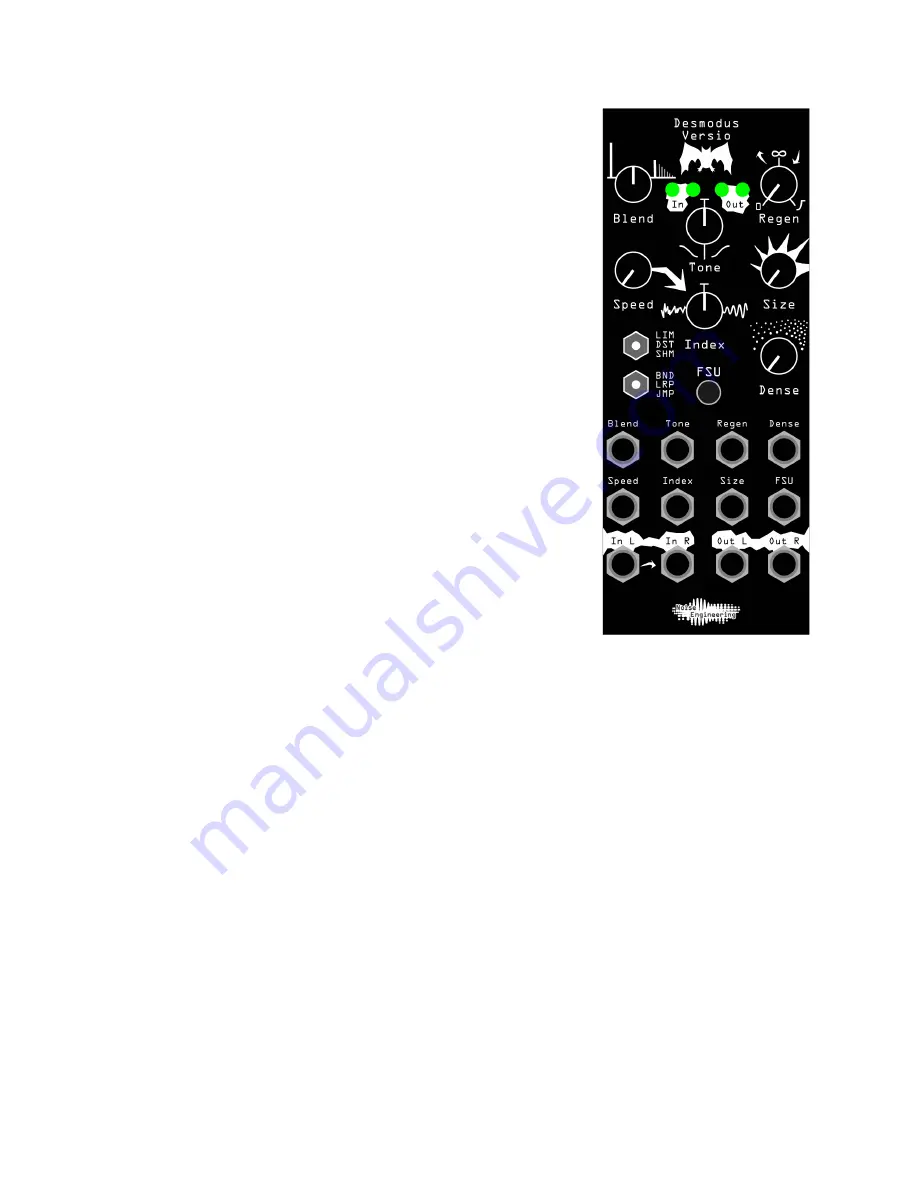
Interface (cont.)
Size:
The delay time of the reverb.
A good way to hear Size is with a percussive input and all
other parameters at 12 o’clock.
Dense:
The spacing of the delay lines. To the left, the effect
sounds more like a delay; to the right, the delays are
smeared into reverb.
A good way to hear Dense is with a percussive input, Size
fully clockwise, and all other parameters at 12 o’clock.
FSU:
This control maxes out the Regen control and mutes
the input to the reverb when the button is pressed, or when
a high gate is sent to its input.
A good way to hear this button’s effect is with Blend above
12 o’clock and a low Regen value.
In L/In R:
Audio input. If R is not patched, the signal from L
is normaled to both inputs.
Out L/Out R:
Stereo output pair.
LIM/DST/SHM:
Reverb style.
•
LIM (Limit):
A clean reverb, using limiting within the reverb tank to contain feedback.
A good way to hear LIM is with moderate Regen values and starting with all other
parameters at 12 o’clock, then playing with Tone and Index/Speed.
•
DST (Distort):
Similar to LIM, but instead of limiting within the reverb tank, slight
saturation is applied for a more distorted sound. A good way to hear DST is with high
Regen values and starting with all other parameters at 12 o’clock, then adjusting
Size and Tone to taste.
•
SHM (Shimmer):
A demonic pitch-shifting algorithm. Adds a one octave pitch shift
that feeds back into the input. A good way to hear SHM is with high Regen values,
and all other parameters at 12 o’clock. Create haunting effects by introducing subtle
modulation with Speed and Index.
BND/LRP/JMP:
Changes how the delay lines respond when the panel controls are
modulated. To hear each mode clearly, turn Regen fully clockwise and modulate the
Size parameter.
•
BND (Blend):
Crossfades the delay times for smoother changes.
•
LRP (Interpolate):
Slowly changes delay line length, has audible pitch shift effects
due to the delay lines changing length.
4

























